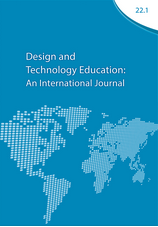A Case Study in Online Formal/Informal Learning: Was it collaborative or cooperative learning?
Keywords:
design education, makerspace, collaborative learning, cooperative learning, formal and informal learningAbstract
Developing skills in communication and collaboration is essential in modern design education, in order to prepare students for the realities of design practice, where projects involve multidisciplinary teams, often working remotely. This paper presents a learning activity that focusses on developing communication and collaboration skills of undergraduate design students working remotely and vocational learners based in a community makerspace. Participants were drawn from these formal and informal educational settings and engaged in a design-make project framed in the context of distributed manufacturing. They were given designer or maker roles and worked at distance from each other, communicating using asynchronous online tools. Analysis of the collected data has identified a diversity of working practice across the participants, and highlighted the difficulties that result from getting students to work collaboratively, when not collocated. This paper presents and analysis of participants’ communications, with a view to identify whether they were learning collaboratively, or cooperatively. It was found that engaging participants in joint problem solving is not enough to facilitate collaboration. Instead effective collaboration depends on symmetry within the roles of participants and willingness to share expertise through dialogue. Designing learning activities to overcome the challenges that these factors raise is a difficult task, and the research reported here provides some valuable insight.
Downloads
Published
How to Cite
Issue
Section
License

This work is licensed under a Creative Commons Attribution 4.0 International License.
This work is licensed under a Creative Commons Attribution 4.0 International License.
Authors who publish with this journal agree to the following terms:
Authors retain copyright and grant the journal right of first publication with the work simultaneously licensed under a Creative Commons Attribution License that allows others to share the work with an acknowledgement of the work's authorship and initial publication in this journal.
Authors are able to enter into separate, additional contractual arrangements for the non-exclusive distribution of the journal's published version of the work (e.g., post it to an institutional repository or publish it in a book), with an acknowledgement of its initial publication in this journal.


